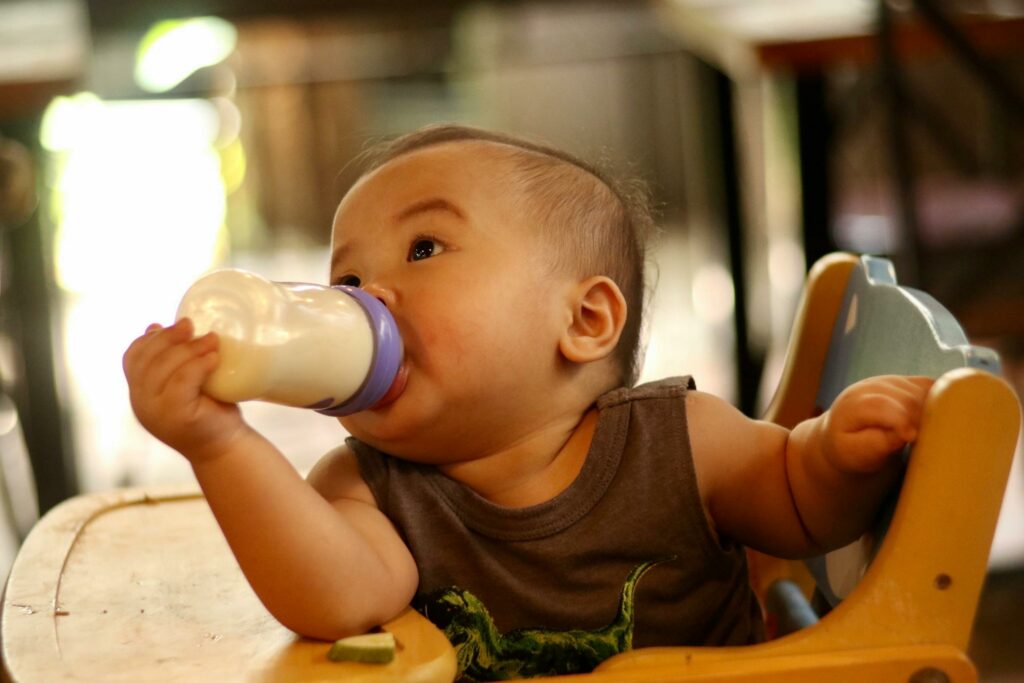 As a Certified Breastfeeding Counselor, it is important to be familiar with things such as donor milk. Share The Drop founder, Kelly Cox, reached out to the International Breastfeeding Institute to ensure our counselors are aware of this platform.
As a Certified Breastfeeding Counselor, it is important to be familiar with things such as donor milk. Share The Drop founder, Kelly Cox, reached out to the International Breastfeeding Institute to ensure our counselors are aware of this platform.
As a CBC, you will meet people who have unique feeding needs. Some parents may not be able to produce all the milk their baby needs. While for many families that means utilizing formula, some families prefer to utilize donor breastmilk.
What Is Donor Milk?
Donor milk is breast milk pumped from a lactating person which is then given to another person’s infant. This can be done in several ways. Informally, such as between friends or through online exchanges. It is also done through milk banks.
Milk banks often serve only hospitals and the milk given to babies still inpatient. However, some milk banks serve anyone, even those outside a hospital.
While donor milk is not new, it did fall out of favor in the 1980s during the AIDS epidemic. As reliable testing for AIDS and other communicable diseases have been made available, donor milk has steadily grown in popularity in recent years.
And before milk banks, we had wet nursing. Sharing breast milk is not new. However, the way we connect to share, well, that technology is changing.
What is Share the Drop?
When Kelly reached out to us, she shared:
“Share the Drop ® – the first commerce-free mobile and web app that instantly matches breast milk donors to recipients. The goal of Share the Drop is to feed all the babies and safely connect users with others in their communities.
“Share the Drop was born out of my interest in making a breast milk sharing marketplace open to anyone who needs vital nutrition for their infant but might not produce enough or do not have access to breast milk of their own.”
While the internet and forums have existed for a while to help connect donors and recipients, Share the Drop offers the unique advantage of not requiring donors or recipients to be social media users. There is also the advantage of allowing users and donors to share information to filter searchers with things like dietary restrictions, allergies, medication, and more.
Why Donor Milk Instead of Formula?
The most important thing for infants is that they receive appropriate and safe nutrition which allows them to grow and thrive. We know that feeding at the breast is the physiological norm for human infants following birth. However, we also know there are many variables and situations which can impact whether that occurs.
When a baby cannot feed at the breast, sometimes a parent will pump. However, there again many variables as to whether that can occur. When a parent cannot produce any or all a baby’s milk needs, they have the option to utilize donor milk or formula.
For many families, they are comfortable using commercial formulas which meet certain nutrition standards. Many families have access to clean water and can safely prepare the formula as well as properly clean the bottles. We are fortunate to live in a time where this is a safe and available option which helps many infants thrive.
However, for other families, there is a strong desire and sometimes a need for an exclusive human breast milk diet. As we know there are risks to formula use, it is important we let clients know all their options. Formula is an option, but donor milk is also an option.
We can share both options with our clients and provide them with the information and tools to make informed decisions about what is best for their family and baby.
Why Share the Drop?
We asked Kelly a bit more about Share the Drop and why she founded it. She shared:
“As a breast cancer survivor, I have spent countless hours helping other survivors secure breast milk for their infants. It is through this work I understood the demand for families without the physical ability to produce milk. Offering a platform to connect mothers with excess to families in need is more than sharing milk; it is altruistically about building communities of support. I do not want families to go through the time and expense of shipping milk, but rather meet others in their own neighborhoods, and create support systems as they navigate early parenting.”
Kelly Cox is also a doula and prenatal yoga teacher. More on why she founded Shared the Drop, she said, “Having worked with women for the last two decades, I am keenly aware of the struggles that can arise based on how they feed their infants. We are swarmed with messages about ‘breast being the best’ and then often left with shame if breastfeeding is difficult, or we cannot produce any at all.”
As a CBC, you can likely relate to the messages we send families. We want to encourage them to breastfeed, and we share all the benefits of it while sharing the risks of formula. However, what do we do when a client is unable to provide breast milk for any reason?
One thing we can do is inform them of the option of milk sharing and receiving donor milk.